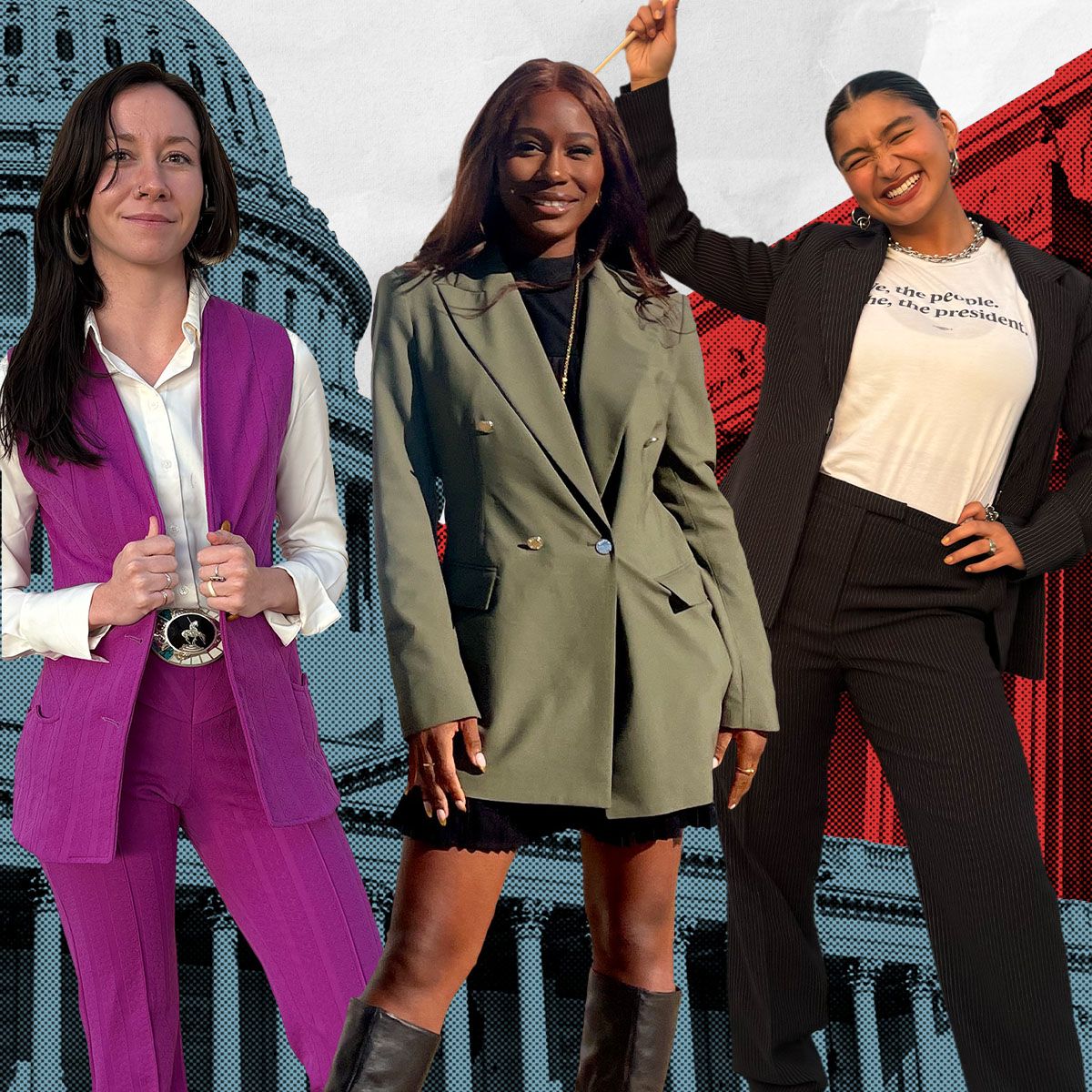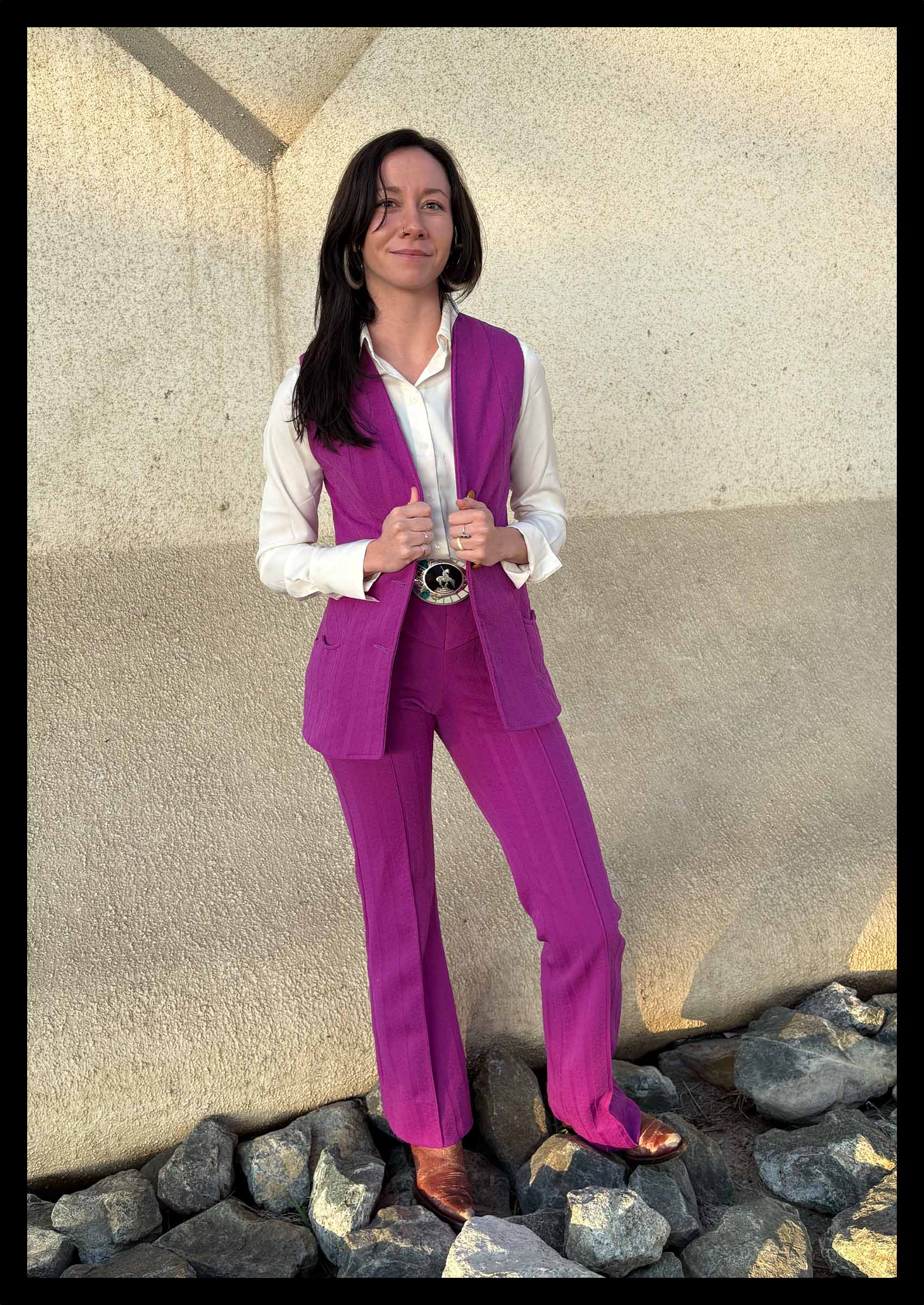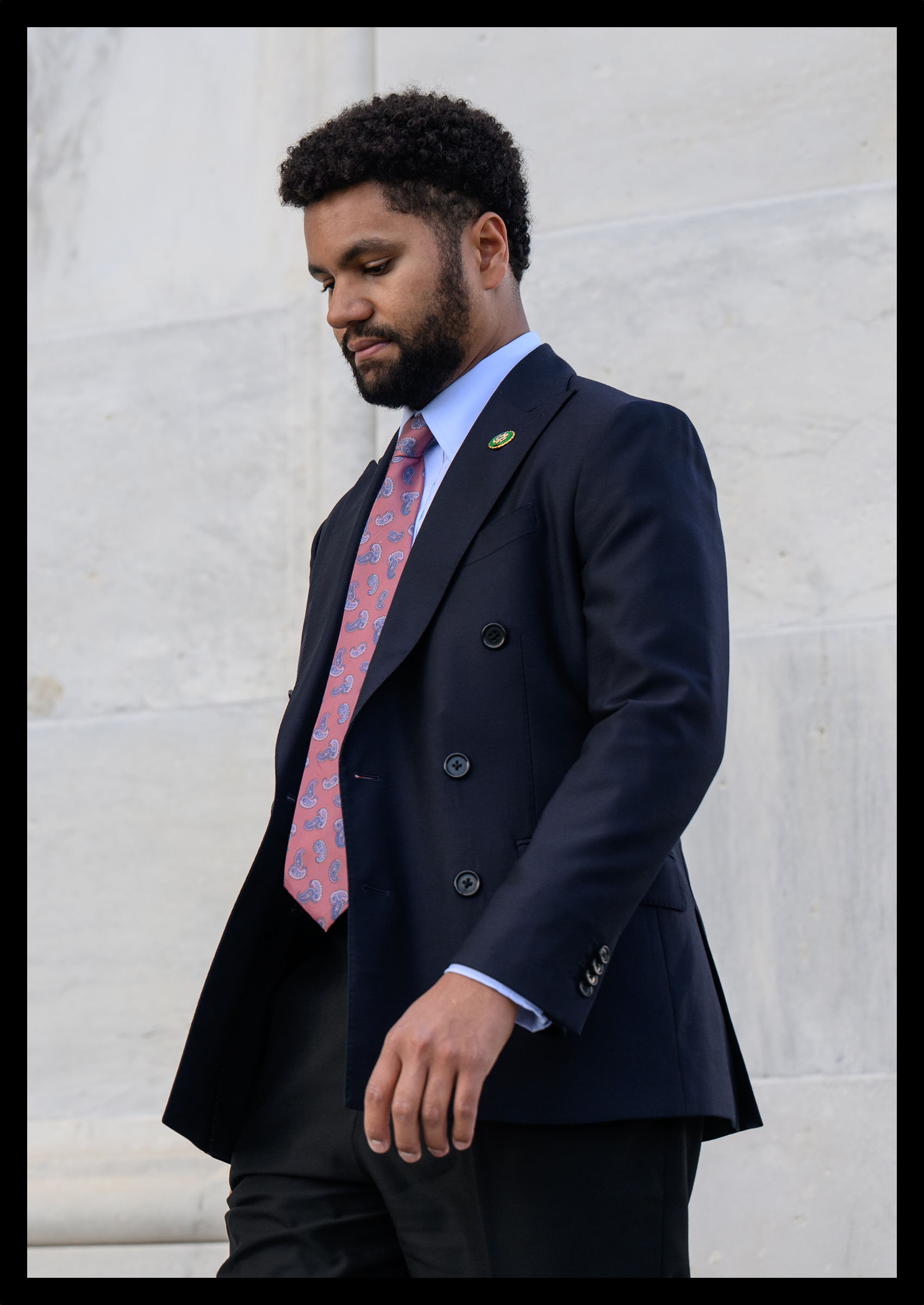
When Deja Foxx walked onto the Democratic primary debate stage at the Arizona Public Media studio this summer, she was ready to be a voice for generational change—and she looked the part.
At 25, the digital strategist was running for Arizona’s 7th Congressional District, vying for the Democratic nomination and a chance to become the youngest lawmaker on Capitol Hill. She wore a thrifted pinstriped suit she “adores,” likely from the late ’90s or early 2000s; the pants “way too long,” she says on a call in October.
The oversized suit stood out—that was the point. “I don’t shy away from self-expression,” Foxx says, noting that women of previous generations in Washington were often “cautioned to pare down” and suppress their individual style. “And I, in so many ways, embody a rejection of that.”

Foxx isn’t wrong. For decades, the city’s unspoken dress code has favored discretion over personality by design. Business attire is technically required on the House and Senate floor, and long-serving officials tend to choose inoffensive, modest colors and shapes, dressed up with a pearl necklace or an American flag pin. Even when representatives are “protesting” a given administration, they do so in the same old suiting, albeit in colors like highlighter pink or suffragette white. In a city where bureaucracy rules and consensus is key to getting anything done, young politicos are incentivized to not deviate from the norm, both in politics and in fashion.
Now, a new generation of D.C. up-and-comers like Foxx are done blending in. On the campaign trail and in the halls of Congress, where the average age is 58, the old uniform is giving way to looks that feel more joyful and revealing of the person inside them, from bold patterns and colors to funky thrifted items. That shift isn’t universal (plenty of D.C. wardrobes still skew buttoned-up or even “trad wife” conservative), but the contrast only makes this new wave stand out more.
And their message is clear: Personal style can be a form of power. And in Washington, sometimes the boldest thing a young person, or a woman of color, can do is simply be seen.

A lot of times as a minority, you’re raised to do the work and not be the conversation.
Yemisi Egbewole
That was the case for Yemisi Egbewole, a 33-year-old political consultant, commentator, and former chief of staff and advisor to the Biden White House Press Office. When she first arrived in Washington, she says her idea of what it meant to be a working politico came straight from The West Wing, NBC’s marquee political drama that ran from 1999 to 2006. The show’s stars wore buttoned-up, neutral looks that wouldn’t draw attention, just like their real-life inspirations, so Egbewole followed suit. As one of the few Black women in the room, she sensed additional pressure to blend in.
Ultimately, she decided not to let the formality of her position hinder or shrink her personal style. Barbie-pink suiting and bold prints became frequent favorites in her White House wardrobe. “To me the rule was, listen, if [Joe] Biden’s not in the room, I’m going to wear and dress whatever I want and take risks, and so I did,” she says. “A lot of times as a minority, you’re raised to do the work and not be the conversation. Now, I am one of the conversation makers and I’m on TV, and I think that’s given me permission to experiment.”
For many rising political voices, identity sits at the heart of their style decisions, especially at a time when marginalized groups are seeing their histories challenged or erased. For Rep. Delia Ramirez (D-Ill.), who represents much of Chicago’s northwest side, that means wearing a gold butterfly brooch—a small but powerful gesture of solidarity with Latinos and immigrants fearing separation from their families.
“Butterflies oftentimes [represent] evolution of self, but it’s also symbolism of standing with immigrants who have been on the move always,” says Ramirez, 42. “Particularly as we think about the monarch butterfly, who every single year makes that journey from Michoacán, Mexico to Canada, and then they migrate back—it’s my way of being able to demonstrate that I am a proud daughter of immigrants.”

Being able to wear that cape, it’s a representation of this mission of public service, of being a champion of justice.
Rep. Delia Ramirez
The Illinois congresswoman also favors a specific piece of outerwear for her Capitol Hill wardrobe. She has a kaleidoscopic collection of capes ready for any constituent meet-and-greet or congressional hearing, which is an offshoot of her longtime fascination with superheroes. “Being able to wear that cape, it’s a representation of this mission of public service, of being a champion of justice,” Ramirez says. “When I put that cape on—I know it sounds cheesy—I feel stronger.”
Fashion serves a similar purpose for 26-year-old activist Sophie Schwartz. As a member of the Cheyenne River Sioux Tribe, Indigenous Peoples’ Initiative and Erased No More Foundation, she often wears Indigenous accessories hand-crafted by various Native artists, including her mother, an avid and talented beader.
“I view that as a way to not only express, appreciate, and represent my culture and other Native cultures, but also as a way to think very critically about where I’m spending my money and who it goes to,” says Schwartz, who is also a public policy graduate student at Georgetown University. “Supporting local Native artists and Native economies is a very real and direct action I can make in terms of political expression and supporting sovereign economies and tribal economies.”

It’s also true that fashion has always mirrored the moment, from the power suits of the ’80s to the pink pussyhats of 2017. And for many young Washingtonians, this moment feels like exhaustion. In an era defined by outrage cycles and performative politics, getting dressed has become a small act of optimism and, in some cases, of resistance.
According to Libby Rasmussen, co-owner of Vintage Vintage Vintage, D.C.’s largest vintage collective, young Washingtonians are searching for “any bit of joy they can find” amidst an ongoing government shutdown and a relentless cycle of political upheaval. Irrespective of job title or party affiliation, many cultivate that joy through vintage fashion and more intentional shopping habits.
“While D.C. is far from a monolith, the Gen Z folks I interact with really prioritize their individuality and values,” Rasmussen says. “In a moment when everything feels chaotic…wearing what you already own, or something you found at a vintage store, your mom’s closet, or a clothing swap, feels like a political statement on its own.”
In a moment when everything feels chaotic…wearing what you already own, or something you found at a vintage store, your mom’s closet, or a clothing swap, feels like a political statement on its own.
Libby Rasmussen
Personal style aside, there are also practicalities. Dressing for power in Washington has never been cheap, and younger staffers and lawmakers are quick to point that out. When Rep. Alexandria Ocasio-Cortez was first elected, she spoke openly about struggling to afford the expensive pantsuits expected of new members of Congress, a reality that still rings true for many newcomers.
As costs of living climb, 13 percent of Gen Z say they regularly purchase from thrift shops or resale sites, according to a survey by the International Council of Shopping Centers. That trend is showing up across D.C. wardrobes too: Rep. Maxwell Alejandro Frost (D-Fla.), 28, for instance, tells us he turned to secondhand shopping for a formalwear refresh after becoming the first Gen Z member of Congress in 2023. The ties people often compliment, he says, were “$3 or $5 at a thrift store.”

Bringing one’s entire self to D.C. can have its professional downsides, though. Foxx says being a young woman in politics means she’s “always running the risk of being trivialized.” Sometimes, detractors target her wardrobe as a means of minimizing her accomplishments.
“It’s something I’ve come up against time and time again,” she says. “I’m often described as an ‘influencer’ [even] though I’ve been an activist and advocate for a decade, a strategist full-time on Kamala Harris’s campaign, and [ran] a congressional campaign of my own, raising a million dollars.”
In the end, Foxx and her secondhand suit didn’t make it to a Capitol Hill office. The Tucson-born activist, who began her advocacy work at 15, ultimately lost the seat to Rep. elect Adelita Grijalva. (As of press time, Republican House Speaker Mike Johnson has refused to swear her into her congressional seat.)
Despite the loss, Foxx’s first campaign run reinforced her zeal for both living, and dressing, out loud. “I don’t think the way I dress, my body, or my personal story is distracting from my political beliefs or advocacy,” she says. Instead, it’s the first way for potential voters to see exactly who she is.







